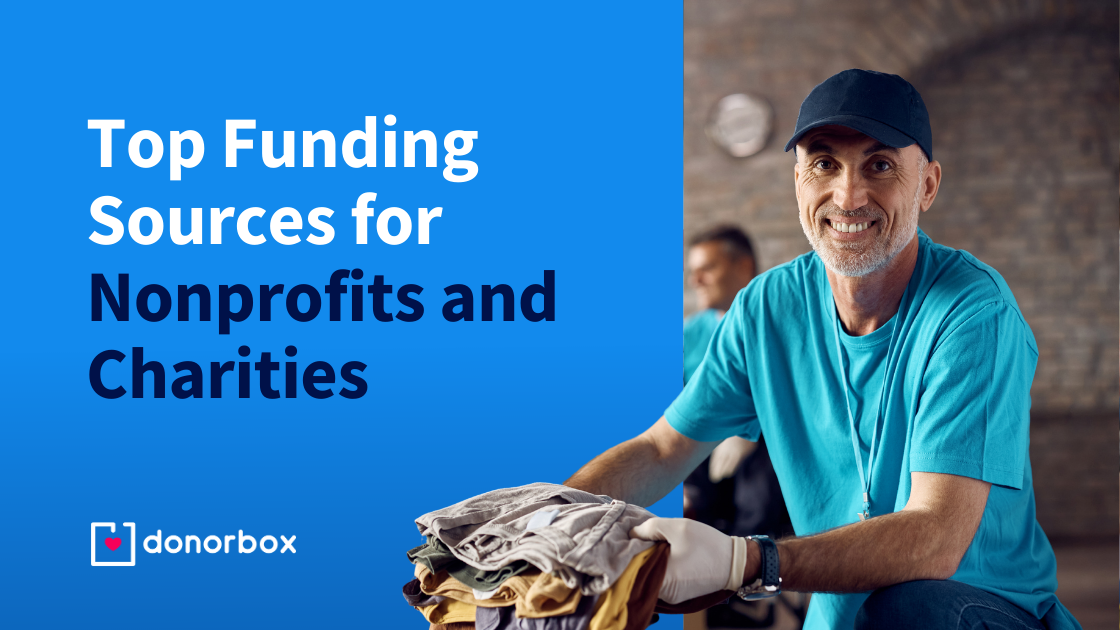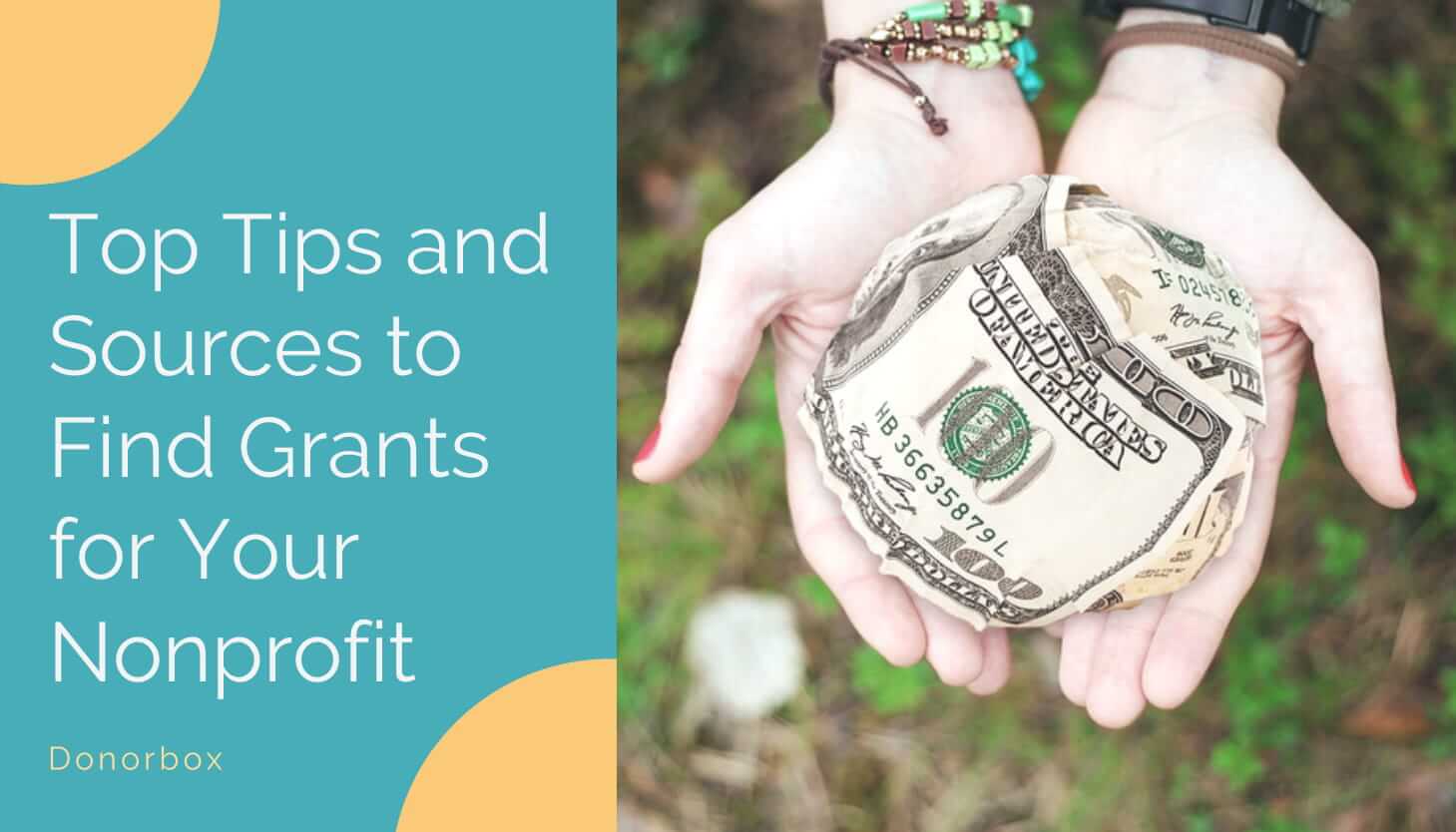For nonprofit professionals, identifying funding sources and deciding on the right funding model for their organization is one of the most challenging tasks at hand. Making decisions about the right approach to handling nonprofit finances is not easy.
Every organization needs money to stay afloat. Nonprofits are no exception to this rule. Money is a frequent topic of conversation amongst nonprofit professionals, and discussions about finances become even more heated during economically unstable times.
On one hand, there is seemingly a multitude of funding models to choose from – which can create some confusion. On the other hand, some nonprofits still feel ‘stuck’ and limited in their options.
What is a “funding model”?
Bridgespan defines a “funding model” as a methodical and institutionalized approach to building a reliable revenue base that will support an organization’s core programs and services.
In essence, a nonprofit “funding model” combines different funding sources into a constellation unique to every nonprofit. For example, one nonprofit might be funded 50% through grants, 30% through events, 15% through a membership program, and 5% through in-kind donations. Another one might be 70% funded through a major donor program, 20% through direct mail fundraising, and 10% through events. Different types of nonprofits are suited to different funding sources, depending on their mission and programs.
How to choose the right funding source for your nonprofit?
While it’s a common practice among most nonprofits to seek funding from multiple sources, research has shown that 90% of the largest nonprofits have embraced funding models built around a single dominant source of revenue.
We often hear it’s good to “diversify revenue streams.” But it can be hard to know what this really means in practice.
5 Steps to Select a Funding Source for your Nonprofit
Step 1: Plan, don’t firefight.
Many nonprofit organizations are guilty of reactive fundraising. Nothing is a substitute for thoughtful planning. Take some time to think about your funding model before you start going through the motions of fundraising. If you’re already raising funds, you can take the time to reevaluate your funding model.
Step 2: Assess and evaluate.
Start from where you are. Take a look at what you’re already doing. Realistically assess your current funding sources. Are they all aligned with your mission, vision, and values? Do they all deliver a good return on investment? Is there space for investigating other funding sources? What about moving away from some?
Pro tip: Data is your best friend here. Pull up relevant metrics and assess your fundraising efforts.
Step 3: Explore.
Organize brainstorming sessions with your team. Get creative and think outside of the box. Look at what other similar organizations are doing and see if there’s something that could work for you.
Step 4: Analyze.
Consider how much you can realistically fundraise from each funding source. Narrow down your brainstorm to a set of funding model options that are sustainable, replicable, and feasible.
Step 5: Select and begin.
Commit to pursuing one or two of the models on your shortlist and develop an implementation plan that will make your funding model plans actionable.
A thought-through and well-defined funding source can help your organization better position itself to attract funds, ensure long-term sustainability, and increase impact.
By intentionally choosing a funding model, you can strategically focus your development efforts on the most promising funding sources and build the internal capacity needed to make the most of them.
6 Main Funding Sources to Help Nonprofits Fulfill their Missions
1. Individual Donations
Of all donations made to nonprofits, over 80% come from individuals.
For this reason, it’s wise to focus on individual donors and make them a central focus of your funding model.
Individual donors can make one-time or recurring donations. They also give in a variety of ways: online and offline, through events, auctions, planned giving, and more. When it comes to individual donations, it’s important to cover all your bases, since individual gifts make up such a big part of a nonprofit’s funding.
For the most part, this is a very effective funding source, particularly for those organizations with large marketing budgets and those with causes that have a wide appeal (e.g. cancer).
1.1. Types of individual donors
Tap into all categories of individual donors, from major donors to regular donors.
1.1.1 Major donors
Sometimes, a nonprofit venture can begin with a large cash infusion from a single major donor. This is great to get a nonprofit from the idea phase to implementation. If you started out this way or you currently rely on a single major donor for funding, think and plan carefully for the point at which you will need to transition to new funding sources.
Although you don’t want to be overly reliant on major donors, it’s still smart to ensure that your funding source nurtures major donors.
Cultivating major donors is a bit of a different ordeal compared to cultivating regular donors. To prospect major donors, consider investing in wealth screening software. If possible, consider appointing a team member to work with major donor leads.
Major donors can also inspire gifts from other individual donors. Steward them to see if they are willing to provide a matching challenge gift that encourages others to give so that their donation will have an extra impact.
1.1.2 Regular donors
Regular or mid-level donors usually give more frequently but their gifts are smaller in size. They often make up the majority of the donor base and can be quite diverse in age, socio-economic background, and interests. This is why it’s crucial to collect and analyze data about your donor base.
Donorbox donor management makes it easy to sift through your donor data for prospects. You can sort your supporters by a variety of filters and even run customized reports with the exact information you need.
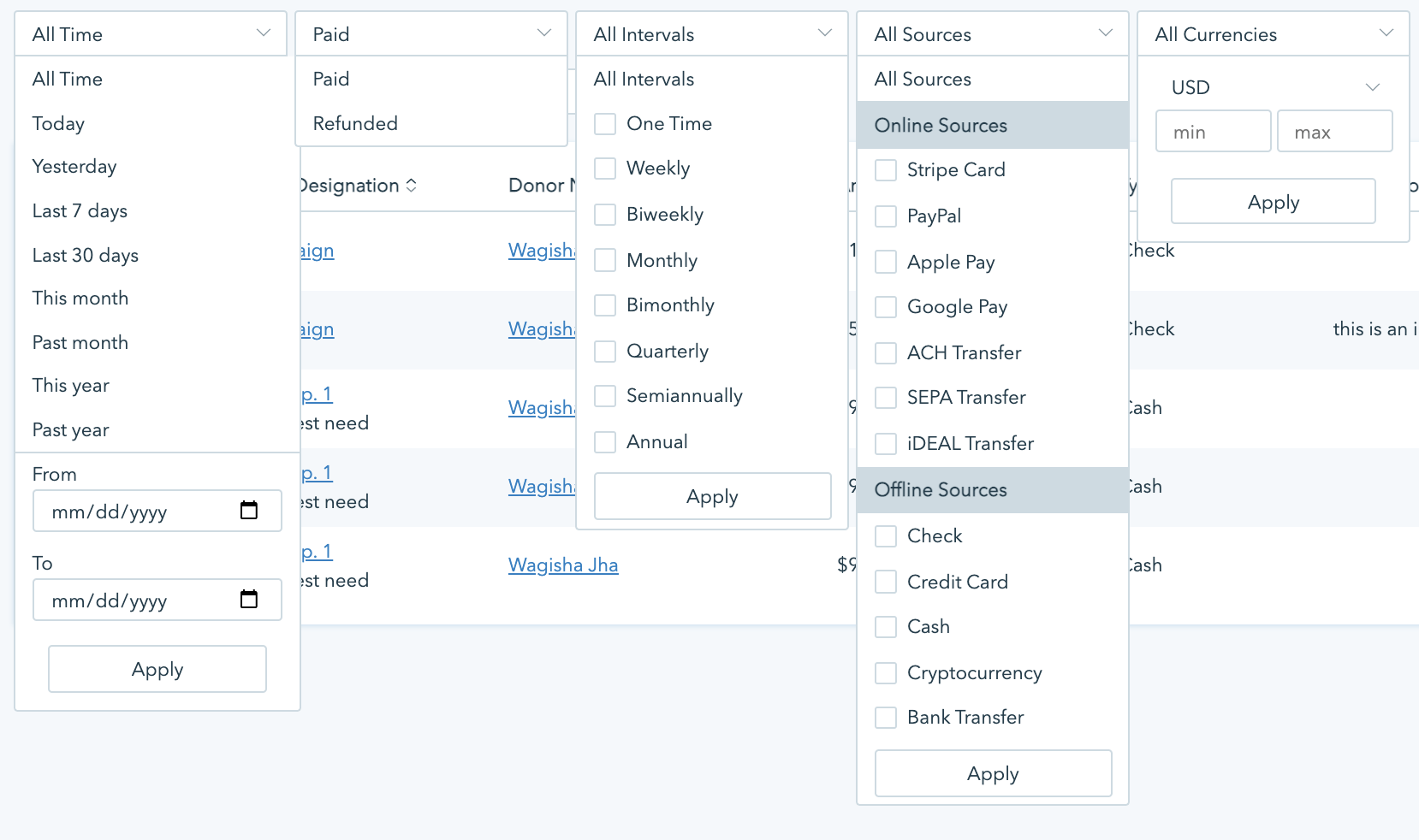
Manage Your Donors Better
To cultivate regular donors, you will likely have to employ a multitude of donor acquisition and donor retention techniques.
Regular donors are either “one-off” donors or recurring donors. Many nonprofit experts recommend that you get regular donors to become recurring donors. This provides your nonprofit with sustained income and therefore allows you to better plan your activities.
1.1.3 Fee for service
Many nonprofits, depending on what they’re offering, simply charge at least a sliding scale fee to cover either the services or goods they are providing. Examples include certain hospitals or public health clinics. You may also consider a sliding scale of prices based on the recipient’s income.
Consider if this is a possibility for your nonprofit, but do your research and keep your beneficiaries in mind: will they be willing and able to pay the price you’ve set?
1.1.4 Alumni
This funding source works particularly well for organizations such as universities and hospitals that serve a large community with a high turnover. If your nonprofit organization serves a large group of people that pass through and benefit from it frequently and consistently, it might be that they would like to give back and help others receive the same benefits or assistance that they did.
1.1.5 Volunteers
Approximately 63 million Americans volunteer their time, talents, and energy to make a difference. The value of all those hours was approximately $193 billion.
While “volunteer hours” aren’t technically a funding stream, your organization might want to view it as one. For example, volunteer hours can reduce the amount of funding you’ll need to raise for a particular program/service.
1.1.6 Planned giving
Planned giving is known by many names: bequest giving, gift planning, deferred giving, legacy giving, and estate planning. They all refer to someone leaving something to your nonprofit organization in their will. These donations tend to be larger and therefore the time and effort to establish the connection and commitment needs to start well before the individual’s end of life.
With the right strategy and efforts in place, this can grow to become a significant piece of your fundraising pie.
1.2 Online or Offline Donations
You can receive individual donations online or offline. While online fundraising grows day-by-day, and more individuals seek information online, don’t be quick to dismiss traditional fundraising.
The best results are usually seen when you combine both traditional and modern fundraising techniques.
1.2.1 Online fundraising
Your website does so much. It’s your welcome mat, your brochure, and your hub for everything you do. It’s also the permanent home for your online fundraising efforts. It’s crucial to invest time and effort to make your website and online donation page shine. Make sure that the potential donor encounters a user-friendly website and has a smooth experience. Don’t hide your donation button! A donor should be able to find your donation link within a couple of seconds of your donation page loading.
Read more about how to design a great donation page here.
Donorbox has you covered with a sleek, attractive, and mobile-friendly donation form that you can customize and embed on your website. With thoughtful touches like easy recurring giving and UltraSwift™ Pay, the donor experiences a smooth donation process – and comes back again and again.
Customize your form to match your branding, the way BluePath did on their donate page.
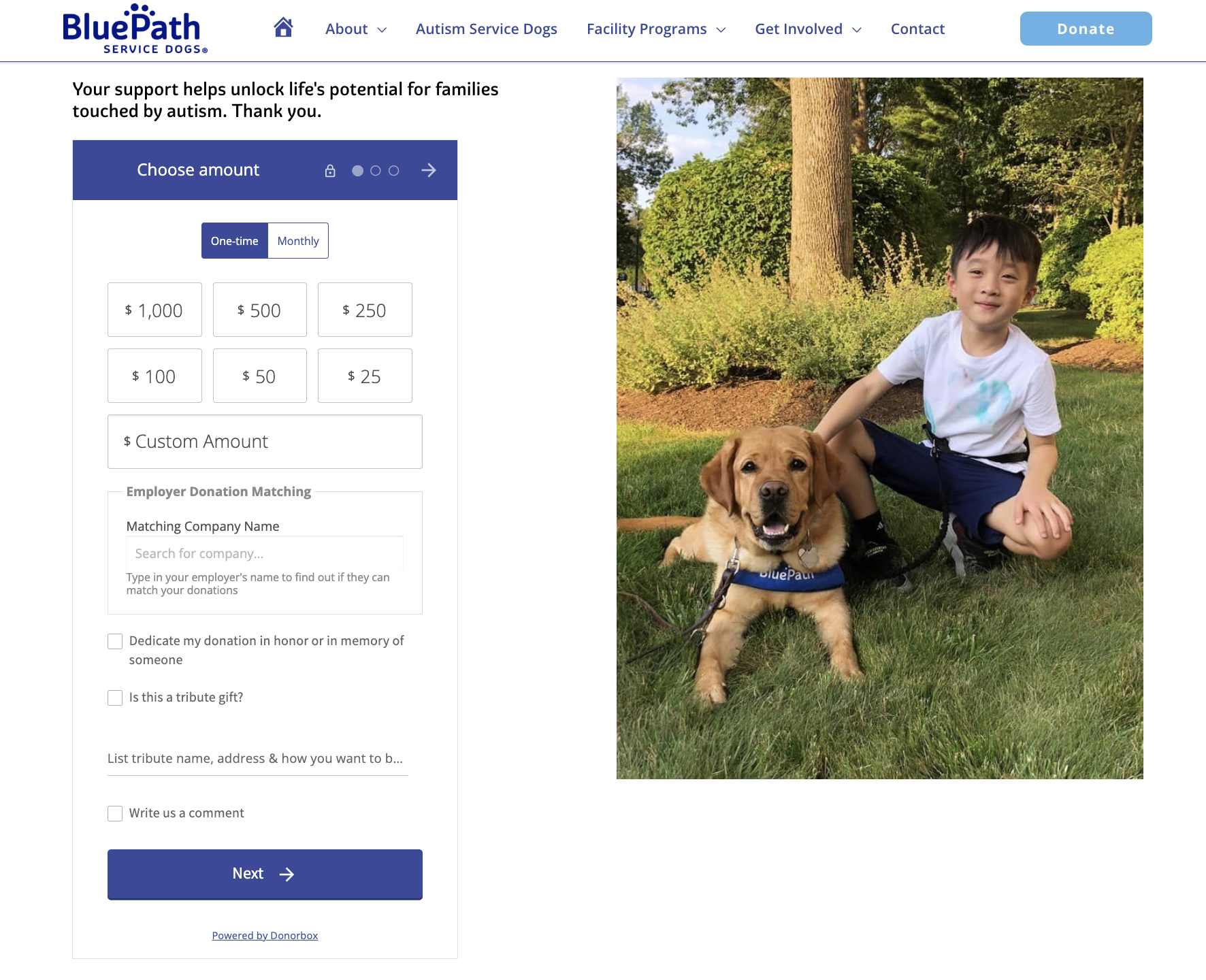
Get Started With Donorbox
In simplest terms, crowdfunding is all about many individuals each making a small donation – $10, $50, $100, maybe more. Many smaller donations add up to make a big impact!
There are many different types of crowdfunding, but the one most used by nonprofits is donation-based crowdfunding. To get the most out of donation-based crowdfunding, post regular updates, share via email, and on social media. Make sure to tell a story – a story is what fuels a crowdfunding campaign.
We love how Black Girls Code used storytelling – both written and video – to raise over $480,000.
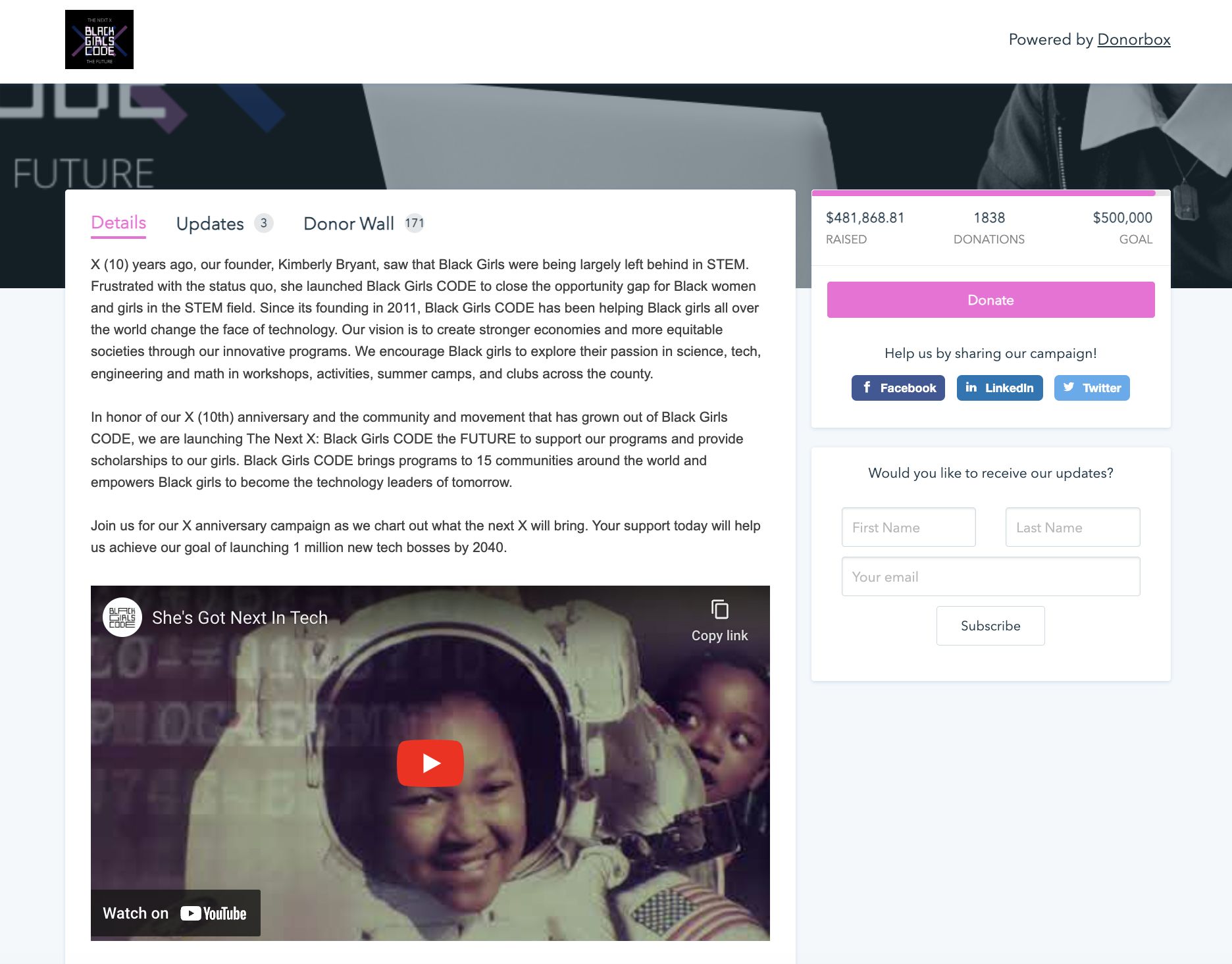
Crowdfund with Donorbox
Crowdfunding often helps get your nonprofit known to potential donors that otherwise wouldn’t have known about your organization, too – so you can raise money and awareness.
Peer-to-peer fundraising is a sub-category of crowdfunding. Instead of having one crowdfunding page where everyone donates, with peer-to-peer fundraising, individual fundraisers usually set up personal fundraising pages to accept donations, which are then received by your nonprofit.
This strategy encourages supporters to reach out to their peers, friends, coworkers, and family members for donations. With Donorbox Peer-to-Peer, you can choose to invite supporters to fundraise on your behalf via email, or allow anyone to sign up the way Maya’s Hope did here –
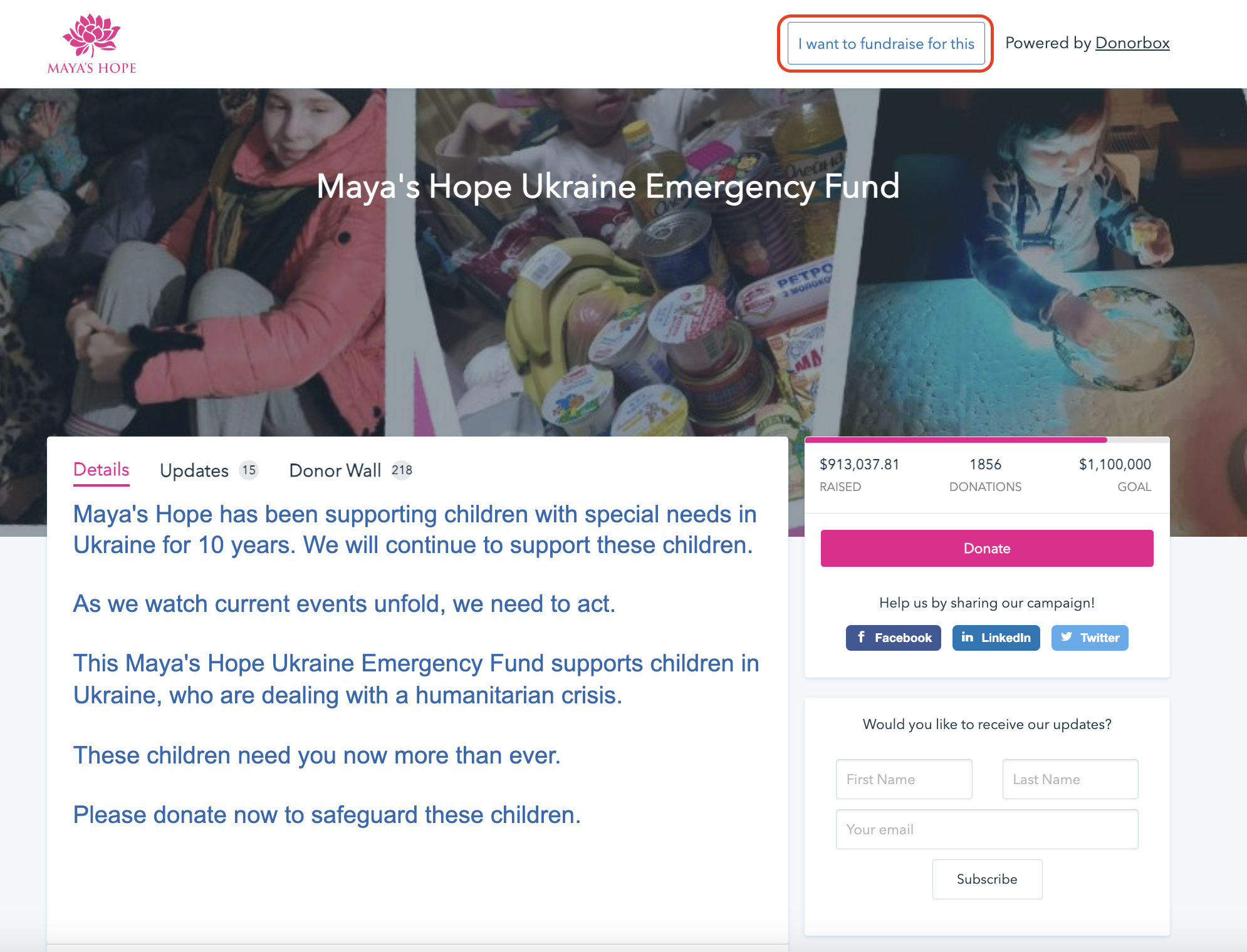
Launch Your Peer-to-Peer Campaign
Peer-to-peer fundraising is effective because it builds on relationships, uses your already-existing donor base. Peer-to-peer fundraising also works well because it’s exponential. All the individual campaigns by your supporters ripple outwards and bring in more donors.
Study after study puts email marketing as the most effective way for nonprofits to build awareness, acquire leads, raise funds, and retain current donors.
Email marketing services are generally free for smaller nonprofits. And even when the email list grows in size, email marketing remains very cost-effective. Furthermore, email marketing tools have become so intuitive – with professionally designed templates, drag and drop features, and other easy-to-use editors. Compared to other types of fundraising, email marketing acquires customers, supporters, donors, and volunteers faster. Emails are also easily customized/personalized.
On the other side, we are swamped with dozens of emails every day, including fundraising and advocacy emails. Therefore, even though the number of subscribers is growing, the engagement rates are dropping. This means organizations need to become increasingly skilled at capturing their readers’ attention.
One advantage of the move to online giving has been the facilitation of painless recurring giving programs.
Although big donations are valuable and should still be pursued, recurring giving programs provide a reliable source of income for your nonprofit. That’s why developing a great recurring giving program is a great investment that can have a tremendous impact on the long-term financial health of your organization.
With Donorbox, you can include up to four of the following donation intervals on your donation form: daily, weekly, biweekly, monthly, quarterly, and annually. You can set a default interval and mark your preferred interval with a heart, the way Project Hiu did here –
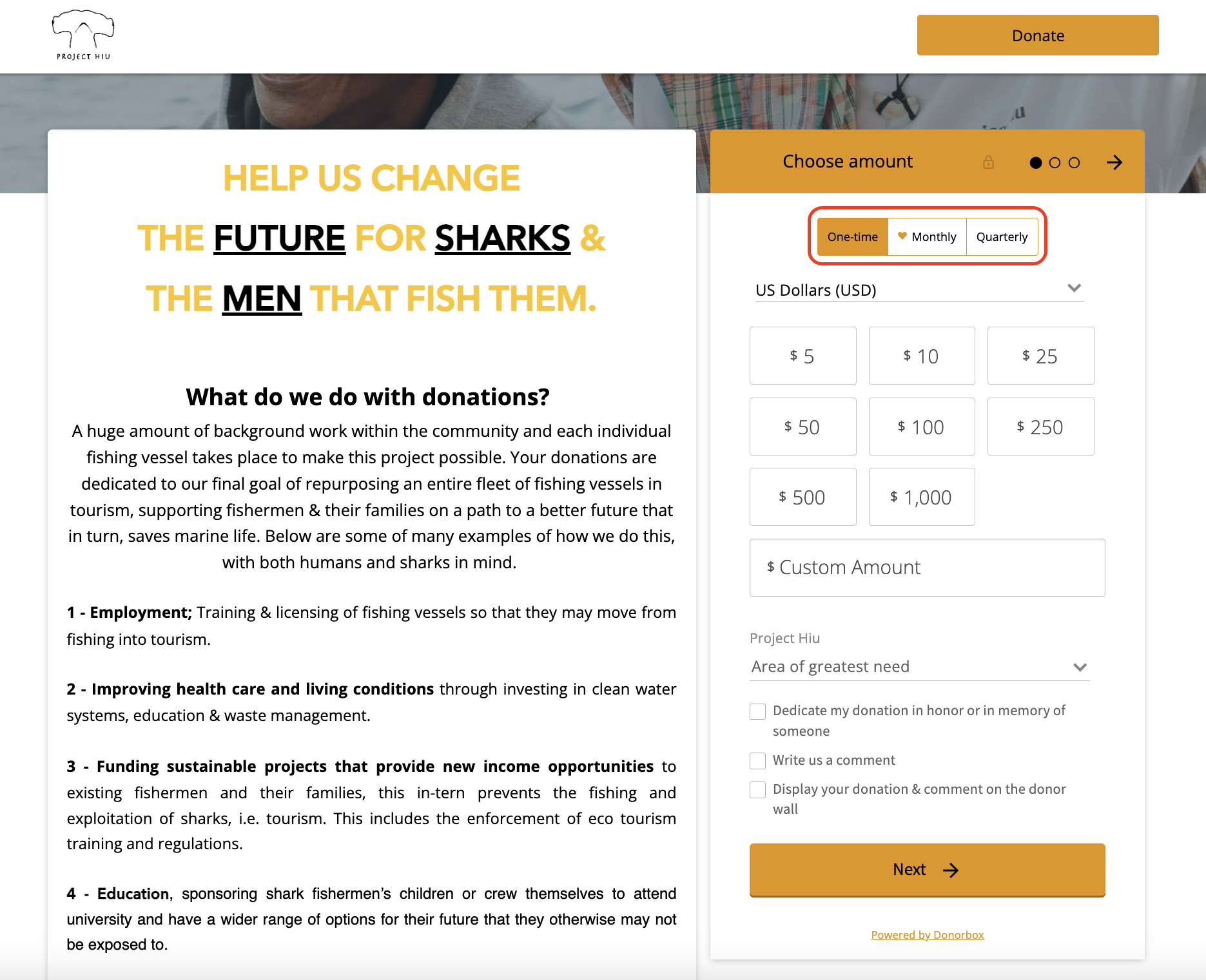
Collect Recurring Donations
When a donor sets up a recurring donation, they choose to give a pre-determined amount of money on a regular basis. With Donorbox, donors can log in to their own account to change or cancel their recurring donation at any time, empowering them throughout the recurring giving process.
1.2.2 Offline fundraising
This offline fundraising method is still used by nonprofits since it’s still effective for certain donor segments. It’s particularly useful for smaller nonprofits or nonprofits that operate locally. Additionally, older donors are more likely to prefer direct mail. If your nonprofit has an older donor pool, you could find direct mail highly effective.
Direct mail gives you a chance to provide in-depth information to your donors – that can’t be conveyed in a text, Tweet, Facebook ad, or even an email.
However, direct mail can be pricey, especially when compared to e-mail marketing, for example. Direct mail also takes time – you have to write the letters, hone the list, track responses, remove people from your list, keep the addresses up to date, and more.
Pro tip: Use QR codes on your mailings to directly connect your donors with your online donation form. Many modern donors prefer to give online over mailing a check, so you don’t want to miss out on that potential funding source. For every Donorbox campaign you set up, you’ll receive a free, automatically generated QR code to easily download and add to your materials.
Fundraising through events has become increasingly popular in the nonprofit community. Whether a nonprofit is hosting a walk-a-thon, gala dinner, art exhibition, concert, field day, or a hike-a-thon, events provide an avenue by which donors and potential donors can interact in person and learn more about the organization.
Donors are more likely to give if they can put names on faces. Since events are generally perceived as fun, they usually attract a large number of people. Events also help raise an organization’s visibility and brand. They help build up the mailing list and can boost online fundraising too.
Donorbox Events manages every step of your ticketing process. You can create as many ticket tiers as you need, ask your buyers for additional donations, collect any necessary information, and even show how much of each ticket is tax deductible. Check out how Jewish Center for Justice did it on their annual summer soiree event –

Create Your Events Page
Events help build camaraderie among the constituency, help organizations meet and dazzle new prospective donors, as well as deepen their relationships with key donors.
Although door-to-door fundraising has diminished over the years due to its resource-intensive nature, it’s still utilized successfully by many organizations, especially political organizations.
Door-to-door solicitation, in general, works best for campaigns or programs that directly affect the people being approached. It can be targeted in terms of audience, which reduces donor attrition. Door-to-door canvassing enables a one-on-one, face-to-face interaction with potential donors/constituents that is unattainable through direct mail, email, and the Internet.
Pro tip: Donorbox Text-to-Give is a great tool for door-to-door fundraising. Simply share your campaign ID or unique code with your donors and have them text it to the text-to-give number. From there, they’ll receive a link to your donation form and can checkout with their donation.
This is also a safer option for your door-to-door fundraisers, as they won’t be walking around with cash or checks.
Phone solicitations are donation requests made over the phone, ranging from one employee making a couple of ‘thank you’ calls to large telemarketing campaigns. Like door-to-door fundraising, this technique has diminished over the years as online fundraising grows, but it can still be effective for some nonprofits.
Phone calls are as personal as it gets. With phone solicitation, gifts are often large. It’s scalable, as the numbers can grow over time. Calling donors can increase a fundraiser’s current donor base and increase gifts, get lapsed donors back on board, improve retention, convert donors to monthly donors, and is the perfect way to welcome and say thanks plus generate feedback from donors.
Check out this guide to running a successful phone-a-thon for more tips and a sample script!
1.2.3. Special types of fundraising
A capital campaign is a time-limited effort by a nonprofit organization to raise significant dollars for a particular project, such as funding a new building or raising funds for a (very big) new initiative.
Capital campaigns have a beginning and an end but often span several years. A capital campaign employs all the usual means of raising funds such as direct mail and direct solicitation. Capital campaigns require extensive preparation and skillful execution.
Text donations are donations that donors can make via their mobile phones. Usually, donors text a keyword and/or an amount to a dedicated number. They are then usually sent the link to the organization’s mobile-responsive donation page. Once a donor fills out their info on this form, they never have to fill it in again. There are also text-to-give platforms that don’t require filling in a form (where donors can confirm the donation by simply texting back “yes”).
Text-to-give is easy and convenient. Donations by text are somewhat like impulse purchases; which means that nonprofits don’t have to capture donors’ attention for very long.
Here’s an example of a Donorbox Text-to-Give campaign –
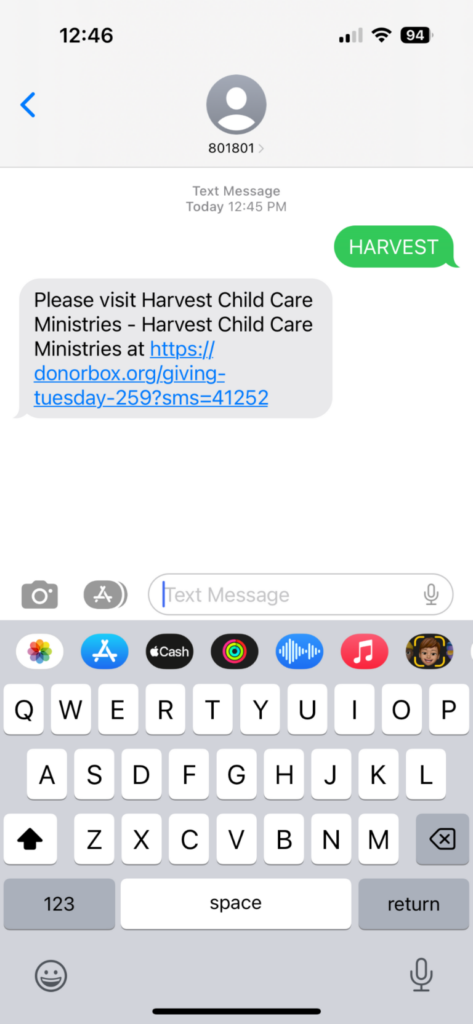
Try Text-to-Give
For more examples, check out these 10 successful text-to-give campaigns!
2. Grants
Nonprofits can apply for grants from the government at local, state, and federal levels as well as private and public foundations. Generally, you are not required to repay any money awarded to you through a grant. In almost every country in the world, in order to be awarded a grant, your organization needs to have charitable/nonprofit status.
Often, grants will be restricted to a certain sector, location, or type of programming. For this reason, nonprofits must search for grants appropriate for their organization and apply for consideration.
Here are some of the main types of grant-giving organizations:
- Governments
- Public charities
- Community foundations
- Family foundations
- Private foundations
Every grant-giving organization will have different requirements, and those can also depend on the country in which your nonprofit is registered.
Pros
- Grants can fuel large projects, enabling large-scale societal impact that wouldn’t otherwise be possible.
- Grants from a government agency can give your organization more credibility, which is helpful in securing more nonprofit funding from other sources.
- Most grants require no repayment as long as funds are spent as outlined.
Cons
- Grants can take a significant amount of time. It first takes time to develop grant-writing skills that actually win grant proposals, it takes time to write a winning application, and then it can take time for you to see the funds.
- They come with specific conditions attached. These conditions apply to things like how exactly you can use the money. They also have specific reporting requirements that you should consider before applying. The conditions can also be related to particular outputs or outcomes or achieving agreed milestones.
- Grants are meant for specific short-term purposes, not to be a permanent nonprofit revenue stream.
Grants can be very appealing to nonprofits, but they do need some thought before you apply for them.
Extra Resources:-
If you’re based in the United States, the US government has a searchable online database of government grants to help you find what you need. Foundation Center is particularly useful for its extensive directory and free resources.

3. Corporate Sponsorships
Corporate sponsorships can be an excellent source of funding for nonprofits.
Corporations are usually keen to partner on projects to improve their philanthropic image or to work on becoming a more socially responsible organization. Corporate social responsibility (CSR) is more important than ever as consumers have become more likely to buy from socially responsible companies.
Different corporations will have different giving programs – some of which may work for your organization.
There can be some reluctance around partnering with corporations. However, there are many socially responsible corporations out there. As long as you accept donations from those aligned with your nonprofit’s mission and values, this can be a valuable funding source.
Value alignment is especially important since today’s donors demand transparency, and being very careful about whom you choose to partner with can safeguard your reputation later down the line.
Corporate support comes in many forms:
- Philanthropic – no-strings-attached donation, similar to individual giving
- Event sponsorship – episodic or short-term support, typically event-based
- Cause marketing – longer-term thematic engagement
- Pro bono – corporate professionals offering their expertise/services
- Matching gifts – when corporations match donations made by their employees
- Paid release – when companies employees a few paid release days each year, allowing an employee or many employees to spend a day or two volunteering during regular work hours
- In-kind gifts – when companies give product donations rather than cash contributions
- Check-out campaigns – consumers give at the cash register when checking out
When considering corporate sponsorships as one of the funding sources for your nonprofit, don’t forget to consider the overhead costs – someone will need to manage the partnerships, especially if you’re thinking of making corporate partnerships one of your main sources of income.
Pro tip 1: Your board can be an excellent source of business contacts. Ask your board members to introduce you to potential sponsors.
Pro tip 2: It’s great to think big and reach out to large corporations. But don’t forget about small businesses too, especially if your nonprofit is smaller or locally based.
4. Membership Fees
This nonprofit funding source won’t necessarily work for every type of nonprofit, but it’s worth looking at.
Consider the mission and the main activities of your nonprofit, and then decide whether you want to utilize the membership fees revenue stream.
This nonprofit funding source is particularly effective if your nonprofit can offer exclusive programs or benefits to its members.
Membership fees may be charged by some types of nonprofits. There are more than thirty types of nonprofits in the US Tax Code. Some provide services for their members for which they charge a membership fee. Examples include the 501(c)(7) Social Club and the 501(c)(6) Business Association.
Others can provide exclusive membership benefits and sell their memberships more as a way to sustain their important missions.
Pros
- Membership programs provide a constant source of revenue for your organization.
- This funding source is immediate and unrestricted.
- Memberships give people a way to have an intimate, ongoing relationship with your organization.
Cons
- Managing a nonprofit membership program takes time and effort. Members often expect special treatment.
- Offering benefits and perks can become expensive. All those mailings, t-shirts, and mugs can add up.
If you’re ready to launch your membership program, Donorbox Memberships makes it easy with a simple membership-focused donation form. You can choose to offer monthly and/or annual memberships with unlimited tiers to customize your program. Plus, easily sort your supporters to provide key benefits to your membership tiers.
We love how this organization uses their membership to sponsor a specific aspect of their mission.
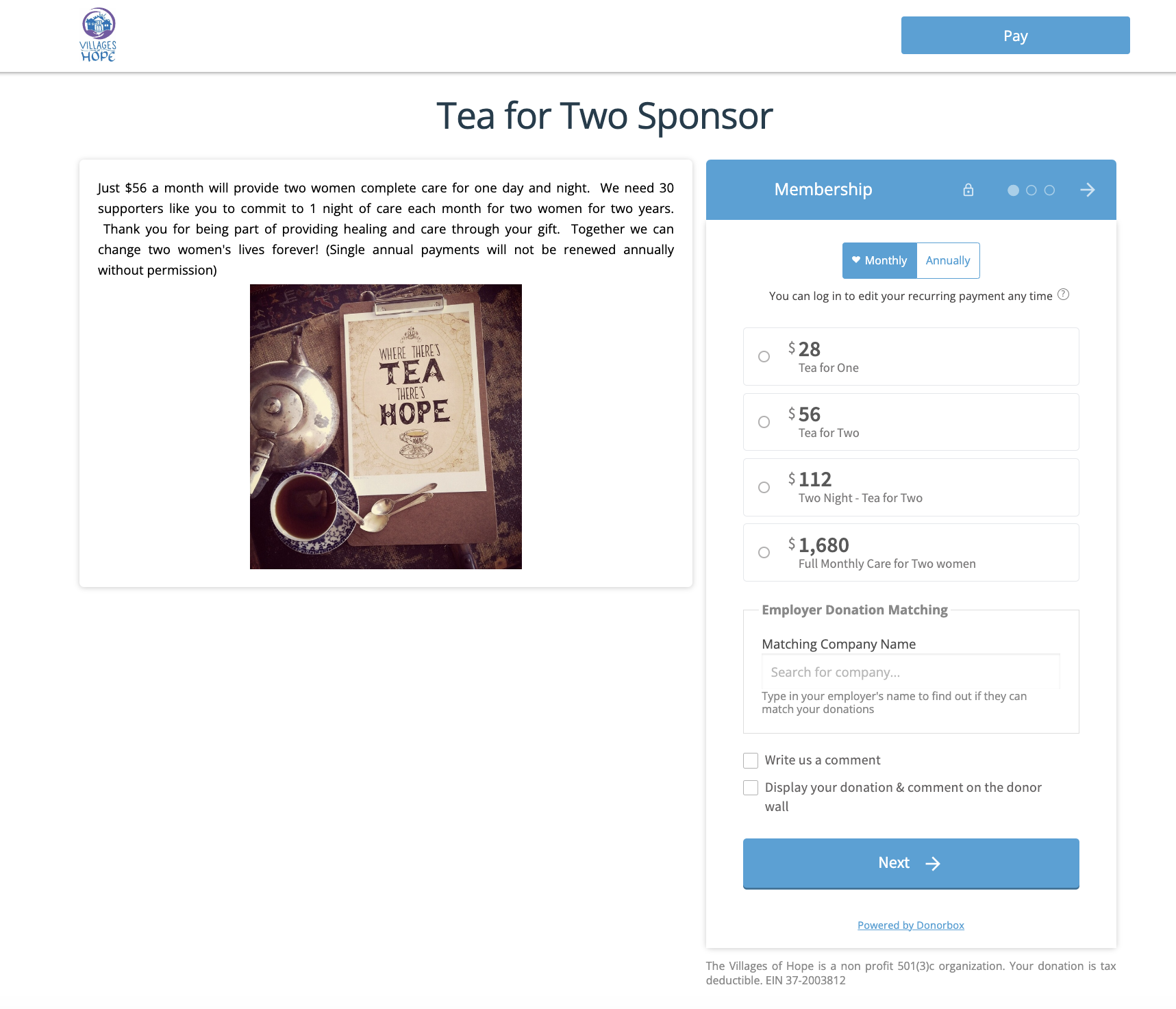
Start Your Membership Program
5. Selling Goods and Services
Another funding source your nonprofit can consider is selling goods and/or services. This funding source is subject to many regulations by the IRS.
For example, you can sell branded goods to bring revenue to your organization. These items typically include t-shirts, tote bags, mugs, cookies, and other items. For example, Goodwill Industries is probably the largest nonprofit retailer.
Many nonprofits also charge fees for some of their services. For example, hospitals bill patients, museums ask for admissions fees, theatres sell tickets, civic organizations charge dues, colleges require tuition and so on.
Nonprofits can trade in most countries. However, if selling goods and services makes up a significant portion of your budget, seek expert advice. If these activities are not related to your primary purpose, there are charity and tax law implications. Keep track of the percentage of your organization’s income that comes through goods and services. Earned income must be related to the mission of the organization, or it can be taxed as unrelated business income.
This can be a great source of income for your nonprofit, but as always, this funding source is not always applicable to every nonprofit.

6. In-kind Donations
In-kind donations will not be helpful to every type of nonprofit but can be an invaluable source of support for nonprofits like animal shelters, homeless shelters, safe houses, or humanitarian relief organizations.
Examples of in-kind donations include food, clothing, and medicine. If in-kind donations work for your organizational model, they can save you many dollars. For example, if your organization seeks to bring food and water into areas struck by natural disasters, getting in-kind supplies is most certainly useful.
It can be the case that you can’t directly use the in-kind donations for your programs. In this case, you could always use them in auctions (depending on the type of items). If you choose to do this, you have to clearly communicate (ideally on your website) which items you’re able to accept, and where are your collection points – if not at your offices.
It’s important to note that in-kind donations do not only include items like food, clothing, and medicine. An in-kind donation can be someone delivering a speech or a workshop for free or someone building your website at no cost.
Conclusion
While opinion varies as to what is the “ideal” nonprofit funding source, utilizing several diverse funding sources to achieve sustainability is generally a good practice.
It’s advisable for nonprofits to never receive more than 30% of their funding from any one source. If an organization loses 30% of its revenue, it could probably restructure in order to survive.
When it comes to securing funds for your nonprofit, you should always make sure to have a plan in place. Invest in relationships with donors, whether they are individuals, foundations, corporations, or government funders. All of these relationships take time to develop and need to be cultivated. You should respect every kind of support.
Donorbox can help you build secure more funding sources with streamlined donation forms and fundraising pages, strong donor management features, comprehensive membership tools, easy event ticket sales, powerful in-person giving options, and more. Sign up for free to see why 50,000 organizations trust Donorbox to help them secure more funding.
We hope this article helped you begin to understand your options so you can start choosing your ideal funding sources.
For more fundraising tips, check out the rest of our Nonprofit Blog. Subscribe to our newsletter for a curated list of content delivered to your inbox every month.

